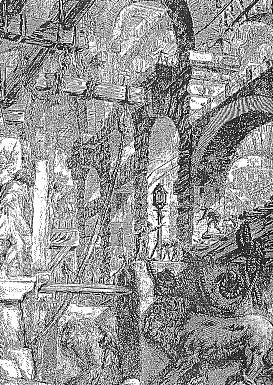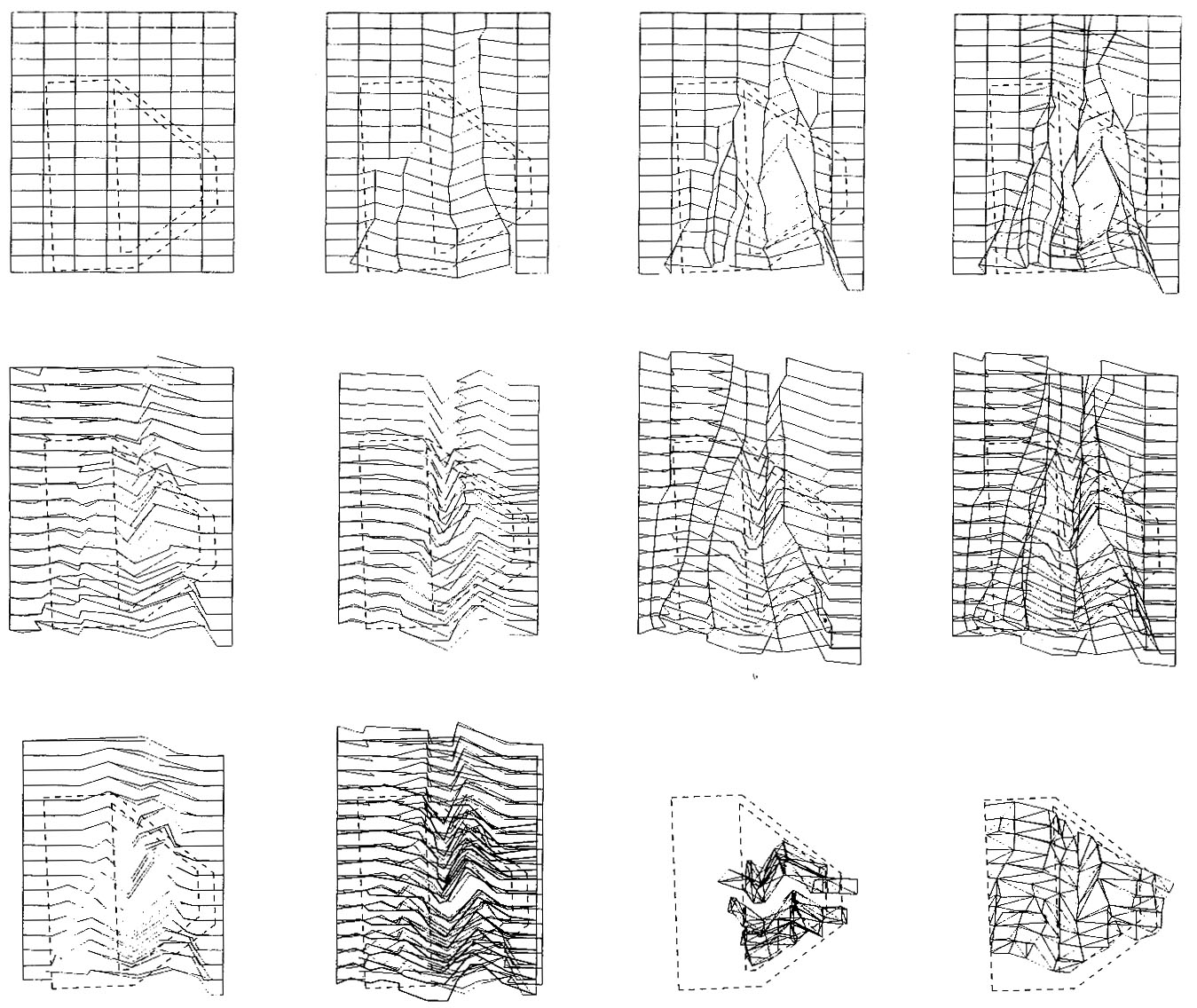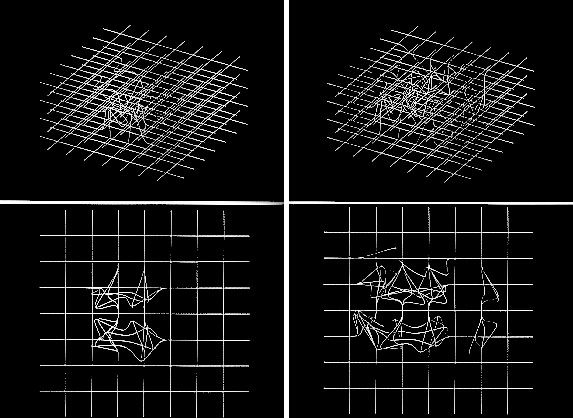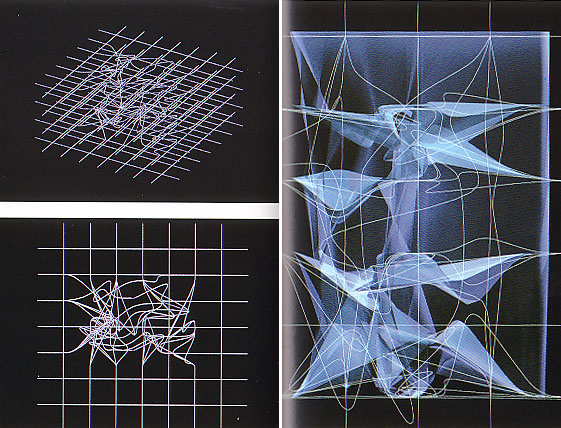"it might seem that anyone who is not born in the electronic era cannot handle
Critical Architecture
"If we look at cinema,
music, and art in general, we need to understand, go beyond and combine
our ideas with others,
even if the latter belong to different ways of working."

(Piranesi’s drawing contains several different
memories, a. the real memory of roman ruins,
b. the imaginary memory of Piranesi’s
imagination, c. the memory of buildings that still exist
and d. the memory of the buildings moved
by Piranesi.)
- The critical interpretation
of Piranesi’s architecture becomes a founding element of his design method,
in which interpretation and comment blend
in a single creative act capable of reinventing the rules of
his own work.
- The attempt to oppose current
practice and accepted rules, trying to change the conditions
imposed
by space and time.
- To transport architecture out of the sphere of the useful or the meaningful.
- form is still a vehicle for meaning.
Eisenman as Piranesi
Inspired by Piranesian Architecture critical
act, Eisneman uses it not only as a starting point, but also a
figurative analogy based on Piranesi's method
of conceiving his architecture.
Piranesi – Perspective, Eisenman – Computer, mockups, and 3D models.
Both in search for an appropriate instrument
to control their taste for superimposition and the reinterpretation
of memory, the endless assembly of multiple
varnishing points and the breakdown of the means of expression
and lines into an infinity of moving segments.
Both are searching for the compactness of dissolving forms.
Method through project.
physical, diagrammatic and
computer models.
(with
a Church for the Year2000 as example)

Diagrammatic Models
E.g. The underlying scheme of two parallel
bars and void compressed between them.
The church is based on two parallel premises:
the first is the relationship between proximity and distance implicit
in the concept of pilgrimage and in the idea
of communication media.
The second, is the new relationship between man, God and nature. Symbolizes in the nature form.
The condition of “in-between” which is typical
of the liquid crystal also provides an opportunity for bonding with the
site
in a less arbitrary fashion.
Scientific and mathematical diagrams. He studies
fractals, chaos theory, catastrophe theory, DNA, Leibnizian atoms, the
behaviors
of liquid crystals. This knowledge and their
principles guide the deformation and development of spaces.

Computerized Models
Physical Models
A visual aid to all formal hypotheses.
It marks the start of the cognitive-perspective
act and the figurative-operative intervention.
A trend or experiments achieved in architecture using electronic techniques.
Transformation capabilities of the computer-
Translation, atomization, logicisation,
and metaphorisation.
1. Functional Diagrams
2. Interpretation of Context
3. Superimposition
4. Deformation
5. Twisting
6. Superimposition
7. Shift
Conclusion

“the system of comments about comments will create a new world.”
With visuals and inspiring quotes, the book
successfully ties in a couple of issues to ponder on. The book
gives an awesome insight of how computer
is used as a new mode of design. It is not about a presentation and
mass production tool that have been used
by most firms and students, but a vehicle for creative concepts as
demonstrated by Eisenman.
"detach from the eye from the mind"
The idea of perception. In conventional drawing,
the person behind the paper works with one perceived viewpoint. In
a 3D screen, a perspective vision no longer
exists; you draw in an arbitrary space without any scale. And each lines
flow in space and there are trillions of
viewpoints to look at the model. To Eisenman, perception of vision is a
tool to
design in an electronic paradigm.
Although, Eisenman diagrams are idiosyncratic,
they demonstrate a certain principle and idea which is correlated.
By looking at architecture from a critical
perspective, it creates opportunities for other fields of discipline to
fuse in.
In fact, his diagrams could never be done
and visionalize without the computer. His principles of form translation,
really pushes its design, and using scientific
and mathematical models like the crystals create a new dimension of
spaces and form.